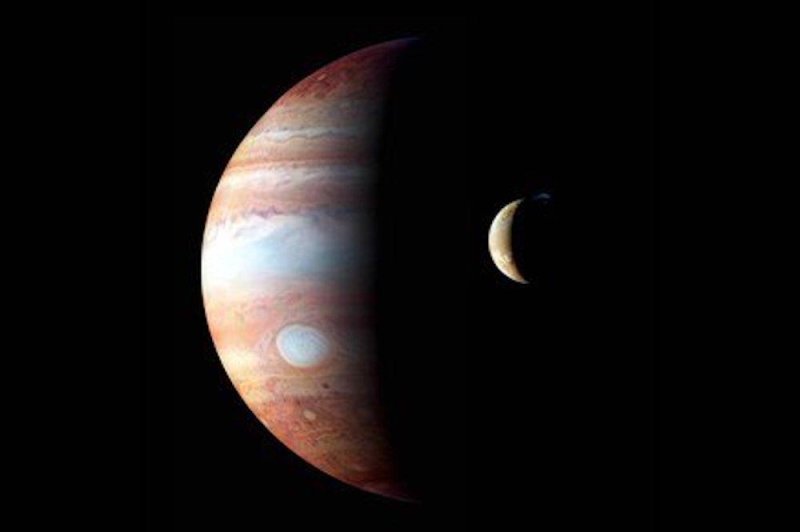Astronomers suggest it's possible Jupiter once hosted but later ejected one or more giant moons. Photo by NASA/Johns Hopkins University/Southwest Research Institute
July 12 (UPI) -- Runaway moons could explain several astronomical mysteries, according to a new study.
Models suggest at least 50 percent of giant moons ejected from their orbits around gas giants, which study authors dubbed ploonets, would survive their initial expulsion and achieve a relatively stable, but oblong, orbit around the sun.
The potential prevalence of ploonets could explain a variety of astronomical puzzles. For example, the research -- which will be published in the journal Monthly Notices of the Astronomical Society -- could explain why astronomers have found so many Hot Jupiters but not a single exomoon.
Models suggest gas giants should should host large moons. But scientists have yet to find any outside of the solar system.
The latest simulations showed moons that begin life in orbit around Hot Jupiter could become dislodged by the angular momentum between the two planetary bodies.
"These moons would become planetary embryos, or even fully-fledged planets, with highly eccentric orbits of their own," Jaime Alvarado-Montes from Australia's Macquarie University said in a news release.
Though hypothetical, the existence of ploonets could explain mysterious dips in the spectral outputs of unique stars like KIC-8462852.
"It's better known as Tabby Star," said Alvarado-Montes. "And the strange changes in its light intensity have been observed for years, but are still not understood. Ploonets could be the answer."
While scientists have yet to confirm the existence of an exomoon, they have found exocomets. Ploonets could explain those, too.
Now, scientists just need to find some. It's possible the lives of ploonets are extremely short, making them difficult to find. If the timescales are big enough, however, astronomers could track them down.















